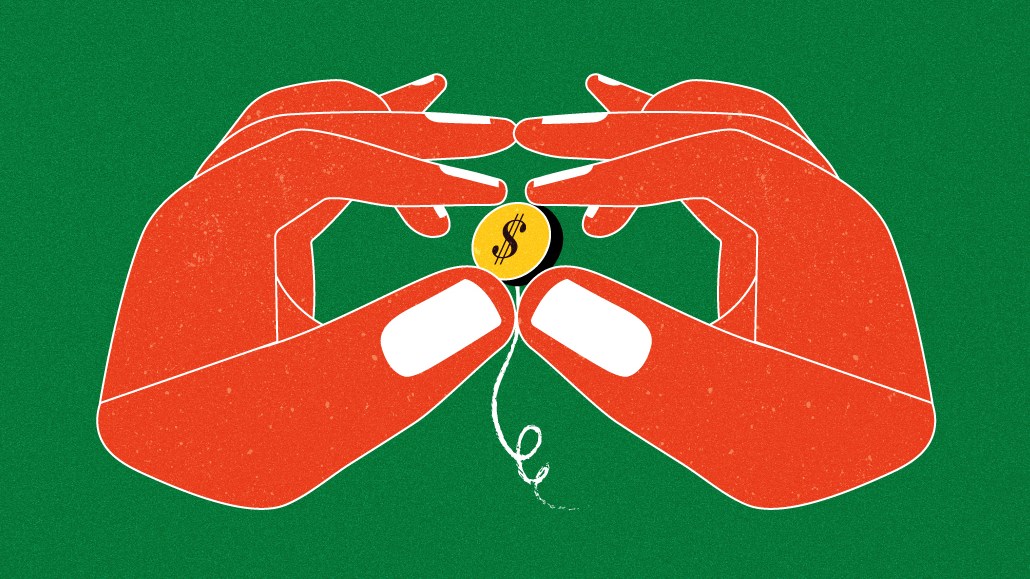Inside the deal structure of Outbrain and Teads’ billion-dollar merger

The much-touted revival of mergers and acquisitions took full bloom this week with the confirmation that Outbrain and Teads will soon unify in a nine-figure, multiparty deal that serves as an interesting proxy for the state of dealmaking in 2024.
As always, the devil is in the details. The numbers revealed in the news release prompted some of the more financially literate observers in the space to stroke their chins at the public framing of the deal as being equal part “merger” and “acquisition.”
Firstly, the top lines are that “Outbrain will acquire Teads in an approximately $1 billion transaction,” with the two billed as “the preferred destination to drive full-funnel marketing outcomes.”
The respective boards approved the deal, which is subject to customary approvals and is set to be completed in the first quarter of 2025; Outbrain COO Asaf Porat is poised to lead the integration of the two companies.
David Kostman, chief executive of Outbrain, is on course to take over as CEO of the combined operation, while Bertrand Quesada and Jeremy Arditi, the Teads’ leadership duo, are set to serve as co-presidents after the deal closes.
‘Not a well-kept secret’
In the weeks leading up to the August 1 merger announcement (and more on that below), discussions between the pair were described as “not a well-kept secret” from one source.
Others pondered how the machinations of such a deal would play out. “They both need exits… but I’m not sure they make sense from a financial standpoint,” opined another, who noted how the “performance-plus-premium” offering of such a pairing makes sense on paper.
In the August 1 filing, Outbrain intends to finance the transaction with existing cash resources and $750 million in committed debt financing from Goldman Sachs, Jefferies Finance, and Mizuho Bank. Furthermore, the 35 million Outbrain shares issued to Teads-owner Altice are valued at approximately $169 million, given the average monthly price of its common stock, which is $4.82 per share.
Additionally, Altice will appoint two board members (one will be non-affiliated to the Europe-based telco) to the board of the proposed new entity, in addition to Outbrain’s existing eight board seats.
Sources noted that both companies’ revenue trajectories in 2023 were much below those of 2021 (the year Outbrain listed on the Nasdaq and Teads abandoned its earlier-planned $5 billion flotation). According to official filings, Outbrain’s 2023 revenues dropped 6% from 2022 to 2023, while sources familiar with Teads’ more recent financials earlier told Digiday that its revenue numbers were similarly stagnant.
Some wondered if financing such a deal would prove risky; what kind of leverage would such a deal require?
Outbrain’s Kostman described the structure as “prudent leverage” based on 2.7x the pair’s combined adjusted EBITDA, which is forecast to be in the region of $180 million to $190 million in 2024. “That’s how financial institutions look at it. They want to know your level of debt versus your EBITDA,” he added.
Certain sources had observed that Teads is (arguably) a bigger company than Outbrain — the company that’s writing the checks — given its healthy margins, numerically superior headcount and heritage as a premium offering. Outbrain told Digiday that Outbrain has approximately 1,000 employees, and Teads has approximately 1,200.
“Outbrain is acquiring… but it’s a merger of two companies of very similar sizes,” he said, noting how “Teads is a more profitable company than us.”
In its analysis of the proposed union of the two companies (published prior to the confirmation of the deal), Quo Vadis penned a note estimating that Teads has a better growth trajectory than Outbrain and how the addition of its numbers could please the public markets.
On the initial day of trading after the announcement, Wall Street concurred, with Outbrain’s stock price up by more than 4% (for now). Sources predicted that other publicly listed ad tech companies may soon look to similarly bulk up to impress investors.
More in Media

Podcast companies turn to live events to capture growing advertiser spend
The surge in the number of live podcast events in 2025 reflects a broader shift: advertisers are betting bigger on podcasts — not just as an audio channel but as a full-fledged creator economy play.

Media Briefing: ‘Cloudflare is locking the door’: Publishers celebrate victory against AI bot crawlers
After years of miserably watching their content get ransacked for free by millions of unidentified AI bot crawlers, publishers were finally thrown a viable lifeline.

How Vogue could navigate potential industry headwinds as Anna Wintour — who agency execs say made ad dollars flow — brings on new edit lead
Anna Wintour’s successor at Vogue will have to overcome the myriad of challenges facing fashion media and the digital publishing ecosystem.








